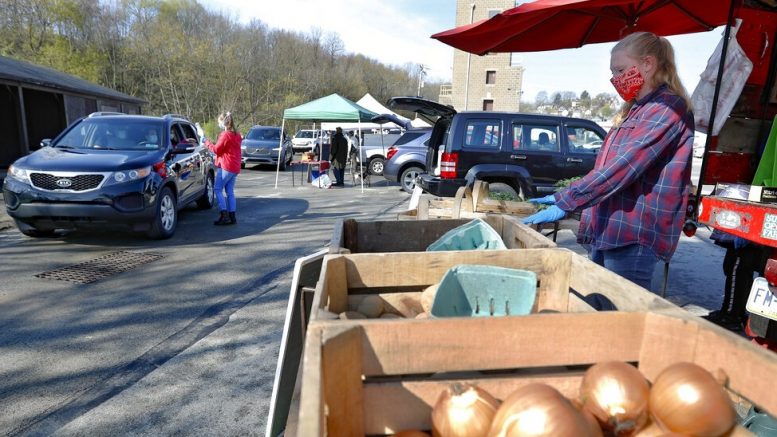HARRISBURG (AP) — The health secretary of Pennsylvania says people shouldn’t be expecting a quick return to their regular way of life even after pandemic restrictions begin to ease in some counties next month.
Dr. Rachel Levine, asked how crowds and social distancing might mix in the months ahead in places such as restaurants, playgrounds and carnivals, forecast no quick end to “the new normal.”
“I think that the idea — and the governor has spoken on this — that we’re going to go back exactly to how we were before, at least for the foreseeable future, is unlikely,” Levine said. “I think there will be a new normal. But as the governor often says, Pennsylvanians are strong and resilient and we will get through this.”
Asked earlier whether social distancing measures would continue during the summer, Levine said it was too soon to tell, citing the progressive easing of business closure and stay-at-home orders to begin May 8 in some counties.
“It’s too early to decide what things will look like in the middle of the summer,” Levine said.
State health officials on Saturday announced that a total of 1,537 deaths associated with the coronavirus have occurred in Pennsylvania. The department confirmed an additional 1,397 positive cases of COVID-19, bringing the statewide total to more than 40,000. The number of infections is thought to be far higher because many people have not been tested, and studies suggest people can be infected with the virus without feeling sick.
For most people, the virus causes mild or moderate symptoms that clear up in a couple of weeks. Older adults and people with existing health problems are at higher risk of more severe illness, including pneumonia, or death.
Levine said it was clear that “there are many more people in Pennsylvania and in any state that have had COVID-19 than we exactly know of at this time, and that does influence the death rate.”
Although some areas have reported death rates closer to 1 in 100 rather than the much higher rates feared earlier, Levine noted that that range is “still 10 times the death rate that it is for influenza.”
Levine said “a significant amount” of those who have died had preexisting conditions such as heart disease, hypertension, high blood pressure, and lung disease — particularly chronic obstructive pulmonary disease including emphysema and chronic bronchitis — as well as diabetes and kidney disease.
“The majority of deaths have been in seniors, the majority of deaths have been in patients in nursing homes,” Levine said. “Many of those patients have co-morbid conditions, sometimes clusters of co-morbid conditions, and that puts them at particular risk from contracting COVID-19 and from getting very ill and tragically passing away from COVID-19.”
FOOD SUPPLY WORKERS-TESTS
Workers supporting the food supply chain in some areas of eastern Pennsylvania will be eligible for priority COVID-19 testing at two sites, state officials said Saturday.
The policy applies to workers ranging from farmers and seasonal laborers to food processing facility and warehouse workers, as well as grocery store employees who live or work in Montgomery, Susquehanna, Wyoming, Luzerne, Carbon, Monroe, Pike, Wayne, and Lackawanna counties, the state agriculture department said.
Adults with symptoms who work in agriculture or food supply and live or work in the affected counties will be able to get priority testing at the Montgomery County mass testing site or the federally funded site at the Mohegan Sun in Luzerne County.
The testing comes at no cost as tests are run through Pennsylvania’s public laboratory system.
Officials cited the designation of agriculture and the entire food supply chain as life sustaining, combined with coronavirus hot spots in Montgomery County and northeastern Pennsylvania, where many of Pennsylvania’s food processing facilities are located.









































